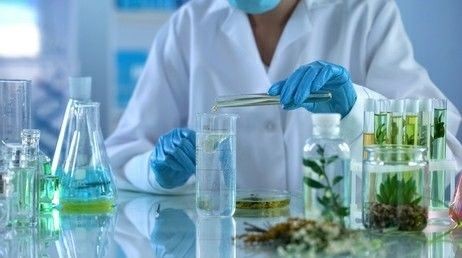Purification of Herbal Liquid Formulations
Inquiry
The clarity, abnormal toxicity, pyrogenicity, hemolysis, and coagulation of herbal liquid preparations are among the critical quality control indicators. The complex macromolecules contained in herbal extracts are unstable and easily oxidized and lead to the loss of activity and action of their chelated medicinal components due to oxidative degradation, thus affecting the efficacy of the drug. And the impurity components in it, affected by heating, pH, enzymes, and other factors, molecular bonds break into soluble free small molecules into the filtrate, which can quickly gather again to form colloidal particles.

The common active ingredients of herbs mainly include flavonoids, saponins, alkaloids, polysaccharides, organic acids, etc. In the case of herbal injections, for example, the ultrafiltration purification process cannot fundamentally solve the problem of impurities and particles, which is the root cause of many clinical adverse reactions. Therefore, Lifeasible has introduced chromatographic purification technology with the high mechanical strength of the stationary phase, high regeneration capacity, and efficient and precise removal of impurities, macromolecules, and colloidal particles, which can help you to prepare high-quality herbal liquid formulations.
Chromatographic purification of flavonoids
- Flavonoids are widely distributed and have a variety of physiological activities.
-
For the common baicalein, baicalin, quercetin, rutin, hesperetin, liquiritin, silybin, daidzein, puerarin, etc., we can use ion exchange column chromatography and adsorption column chromatography to separate and purify flavonoids.
Chromatographic purification of saponins
- Saponins are distributed in various higher medicinal plants and are biologically active with a wide range of biological activities.
-
For steroidal saponins and triterpenoid saponins, we use chromatographic techniques such as macroporous resins, activated carbon, and silica gel adsorption for their separation and purification. This process has been widely used for the isolation and purification of saponins from Panax ginseng and Panax notoginseng of the Araliaceae family, Dioscorea nipponica of the Dioscoreaceae family, and Paris of the Liliaceae family.
Chromatographic purification of alkaloids
- Alkaloids are widely found in dicotyledonous plants and are a class of nitrogenous compounds with complex nitrogen heterocyclic structures and organic amine structures. There are more than 60 alkaloids with significant physiological activity.
- For the common ephedrine, nicotine, alpha-berbine, vincristine, atropine, pilocarpine, caffeine, aconitine, etc., we will use ion exchange and adsorption chromatography for separation and purification, which has the advantage of high-efficiency and good purity.
Chromatographic purification of polysaccharides
- Polysaccharides are widely found in plants and animals and consist of more than ten monosaccharide molecules linked in chains by glycosidic bonds to form polymeric carbohydrates, which are mixtures of different degrees of polymerization. Polysaccharides are essential biomolecules that make up the organism, have good physiological activity, and possess a wide range of uses.
-
We use ion exchange, gel chromatography, and adsorption column layers for the purification of common polysaccharide components, including gynostemma pentaphyllum polysaccharide, lycium barbarum polysaccharide, ganoderma lucidum polysaccharide, pachymaran, tremella polysaccharide, lentinan, spriulina polysacchrides, chitin, agar, hyaluronan, chondroitin sulfate, etc. In addition, we can help you prepare higher-purity monosaccharide substances by tandem purification of multiple types of chromatographic columns.
Chromatographic purification of organic acids
- Organic acids are present in the fruits, roots, and leaves of plants and are highly active. Organic acid salts, esters, and organic acid derivatives, used as medicinal components, have strong pharmacological effects.
-
For the separation and purification of common organic acid esters, organic acid derivatives, and other active ingredients, we often use chromatographic methods such as macroporous resins and silica gel adsorption, including tartaric acid, oxalic acid, malic acid, citric acid, ascorbic acid, benzoic acid salicylic acid, caffeic acid, etc.
Lifeasible improves the quality of herbal liquid formulations based on prescription processes and analysis of the substance base. We help you to select the appropriate stationary phase and establish the optimal end-of-pipe filtration and purification process using a purification chromatography system with orthogonal tests to determine process parameters such as column pressure, flow rate, temperature, and pH. This allows us to fundamentally remove impurities and colloidal particles, eliminate thermal factors and improve the quality of the formulation. Please feel free to contact us to submit your requirements for an optimized purification chromatography system and start a project to optimize the production process of your herbal medicine as soon as possible.
For research or industrial raw materials, not for personal medical use!
Related Services

